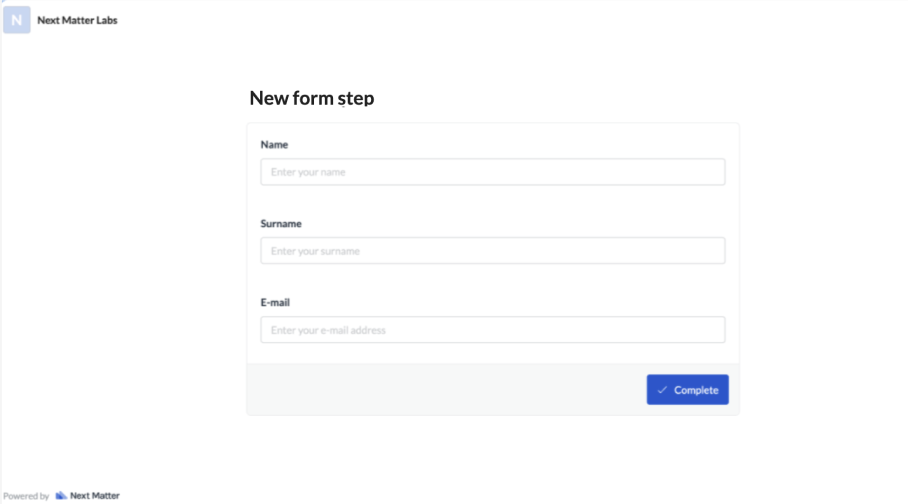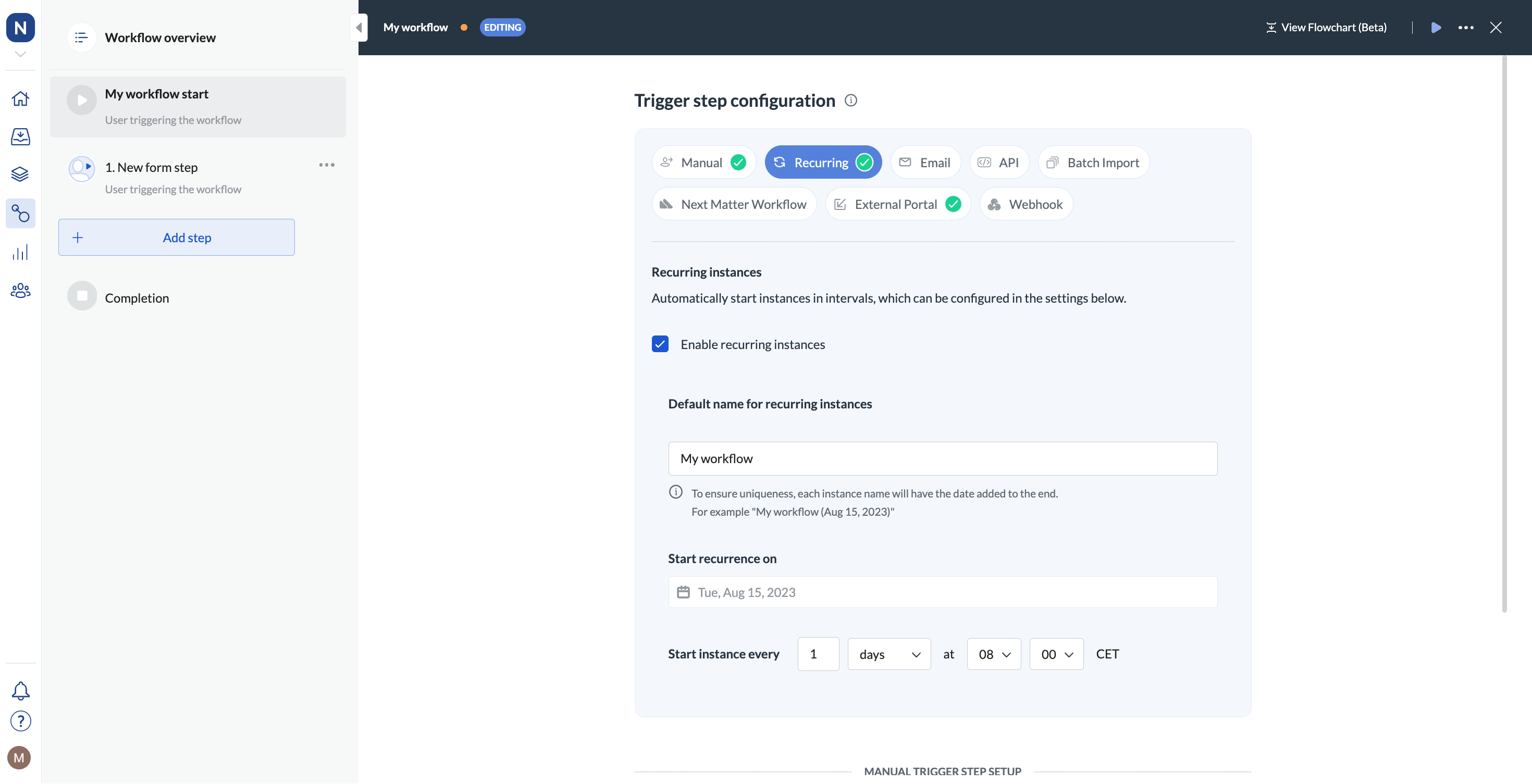
Start instances manually
You can start an instance by clicking the play icon on the workflow.
You can start multiple instances at once.
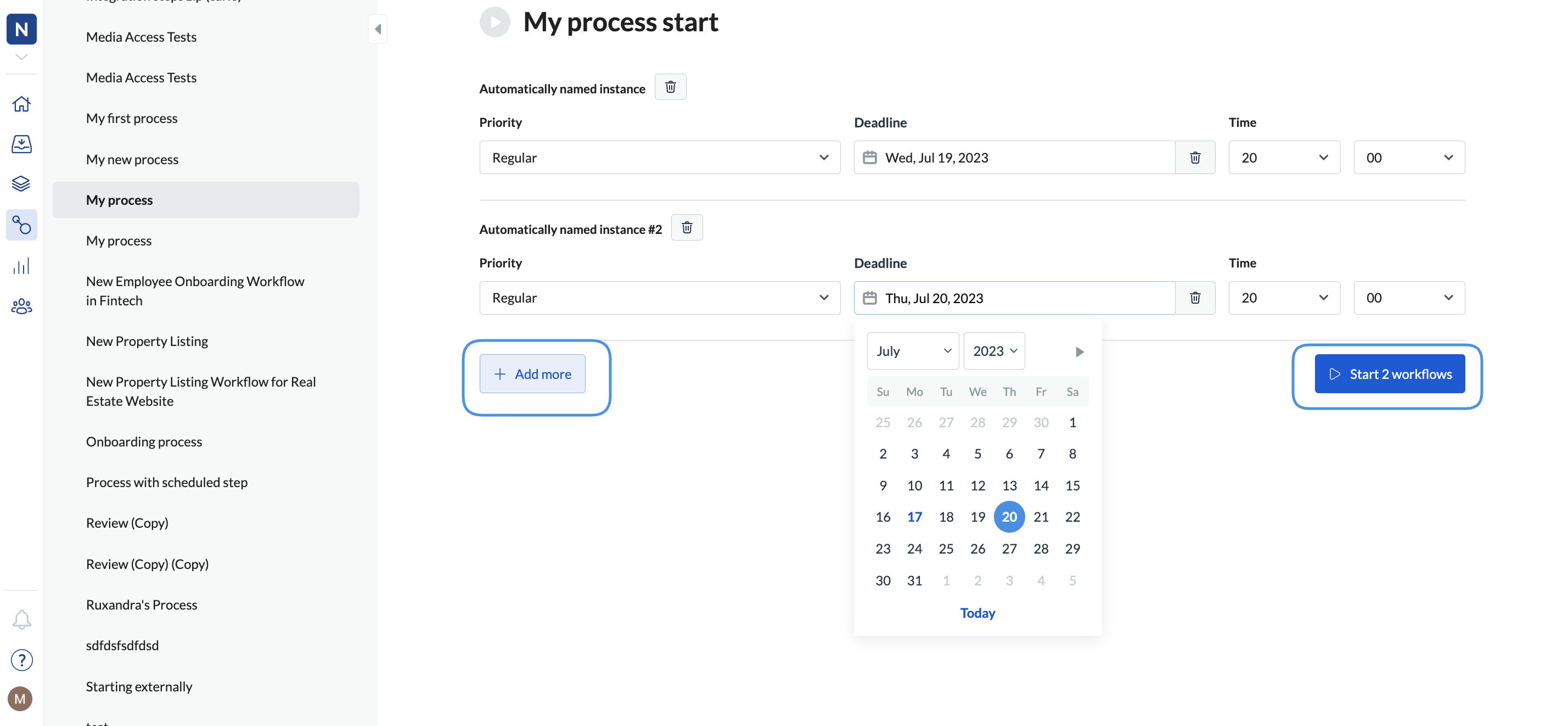
Start recurring instances
You can automatically start instances in intervals and configure the recurrence. You set up the starting date and the recurrence, and you’re good to go.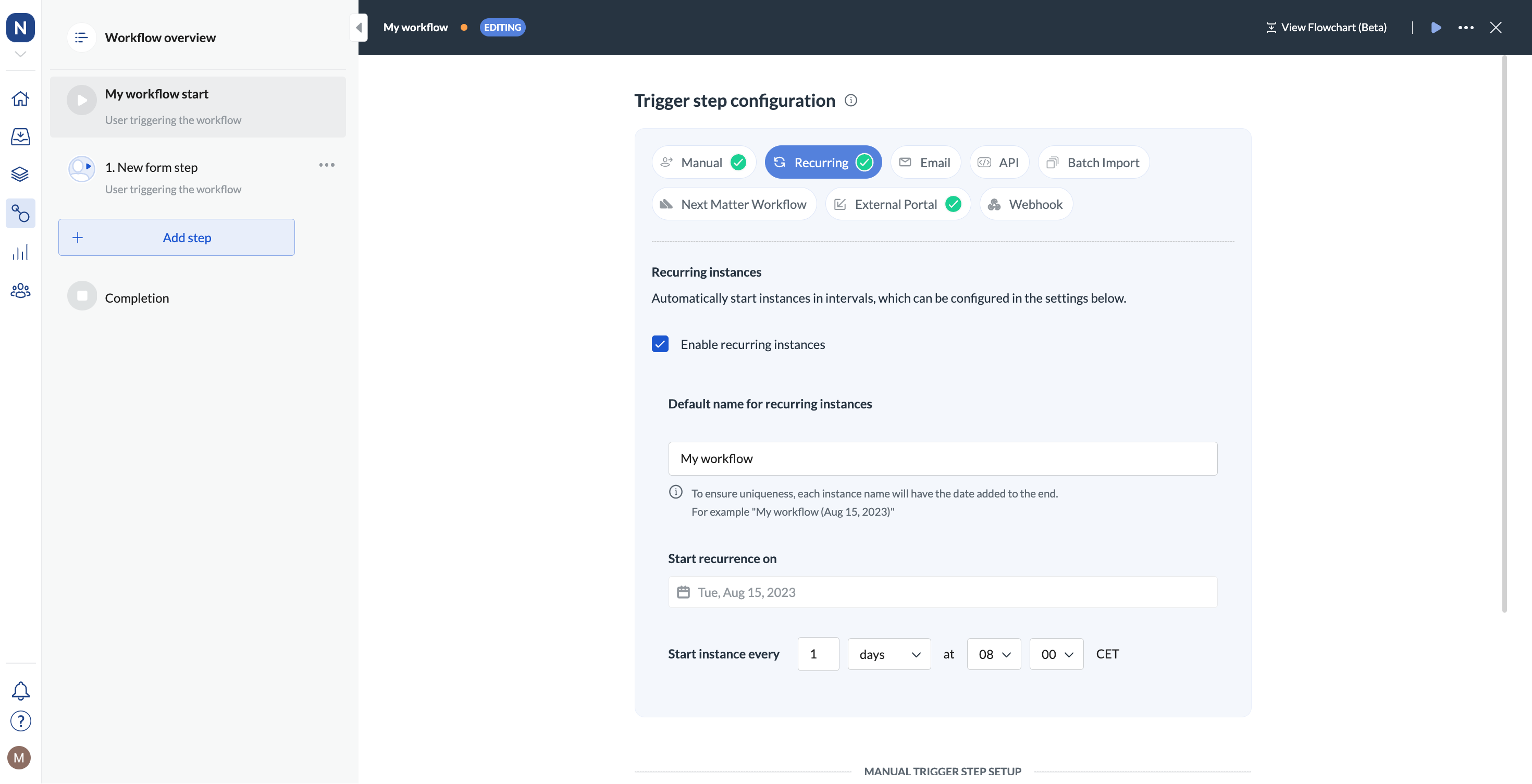
How do I know a workflow is recurring?
How do I know a workflow is recurring?
Each recurring workflow is marked with an icon. If you hover over it, you can see when the next workflow instance is started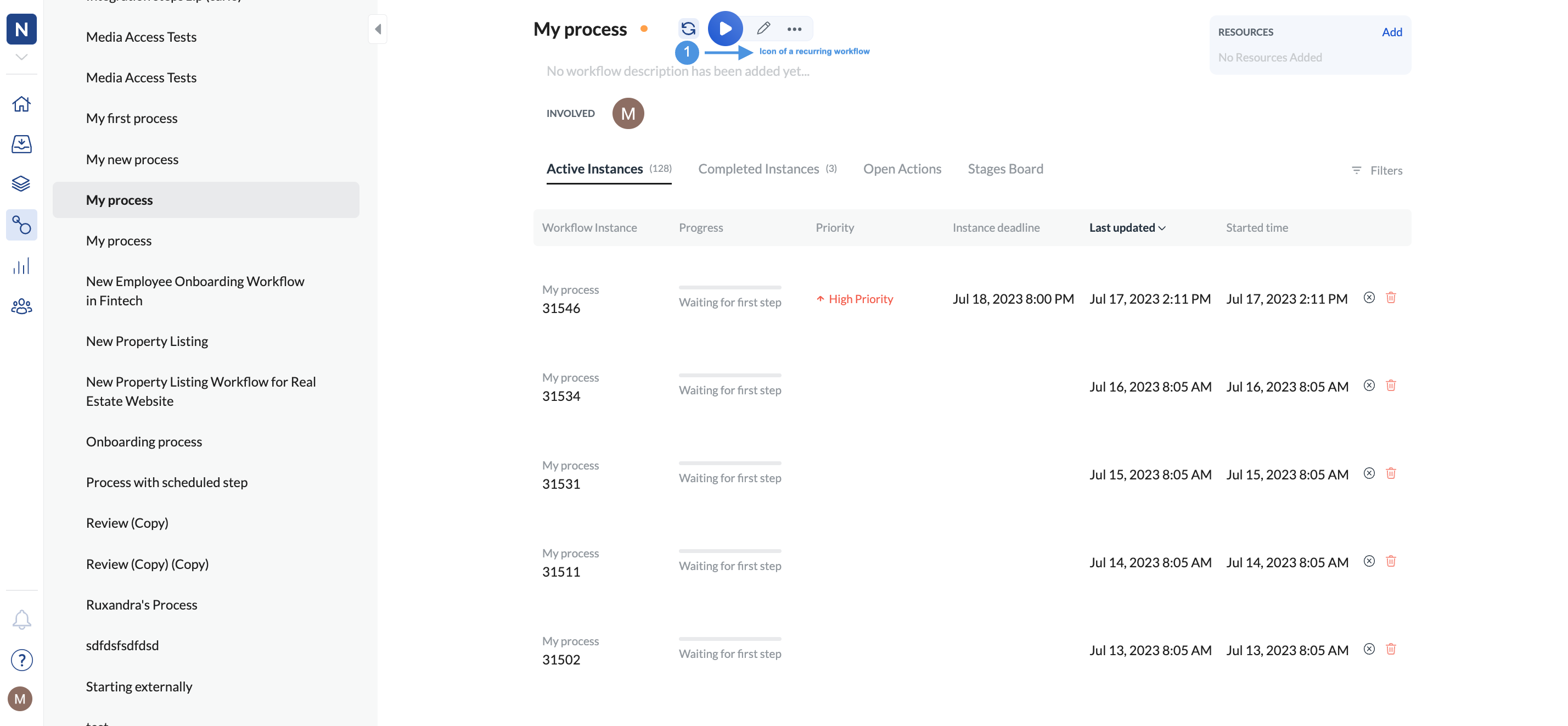

Start instances by email
Automatically start an instance when an email is sent or forwarded to a dedicated workflow email address. To activate the email address for your workflow, contact our Support team. Make sure that you observe the best practices for email triggers:- Disable auto-naming (we automatically add the email title as the name)
- Make the attachment field optional in the email config, as emails don’t always contain attachments.
Start instances with API
You can start an instance by making a call to theCreate endpoint. For details, see API reference.
Tip: Make sure you have your API-Key at hand to authenticate your request.
Start instances from an imported file
Start multiple instances with a CSV, XLS, or XLSX file import. To import a file, contact our Support team. Note that import batches are billed per instance. As part of the workflow, we map the values from the CSV to Next Matter instance values such as tags or instance name, add headers to the file, and launch the instance.Start instances with an external link
Allow anyone with a dedicated workflow portal link to start an instance of a workflow. No Next Matter account is required. Learn how to do it- Click your workflow to open the overview.
- Select External Portal.
- Select Create portal from first step.
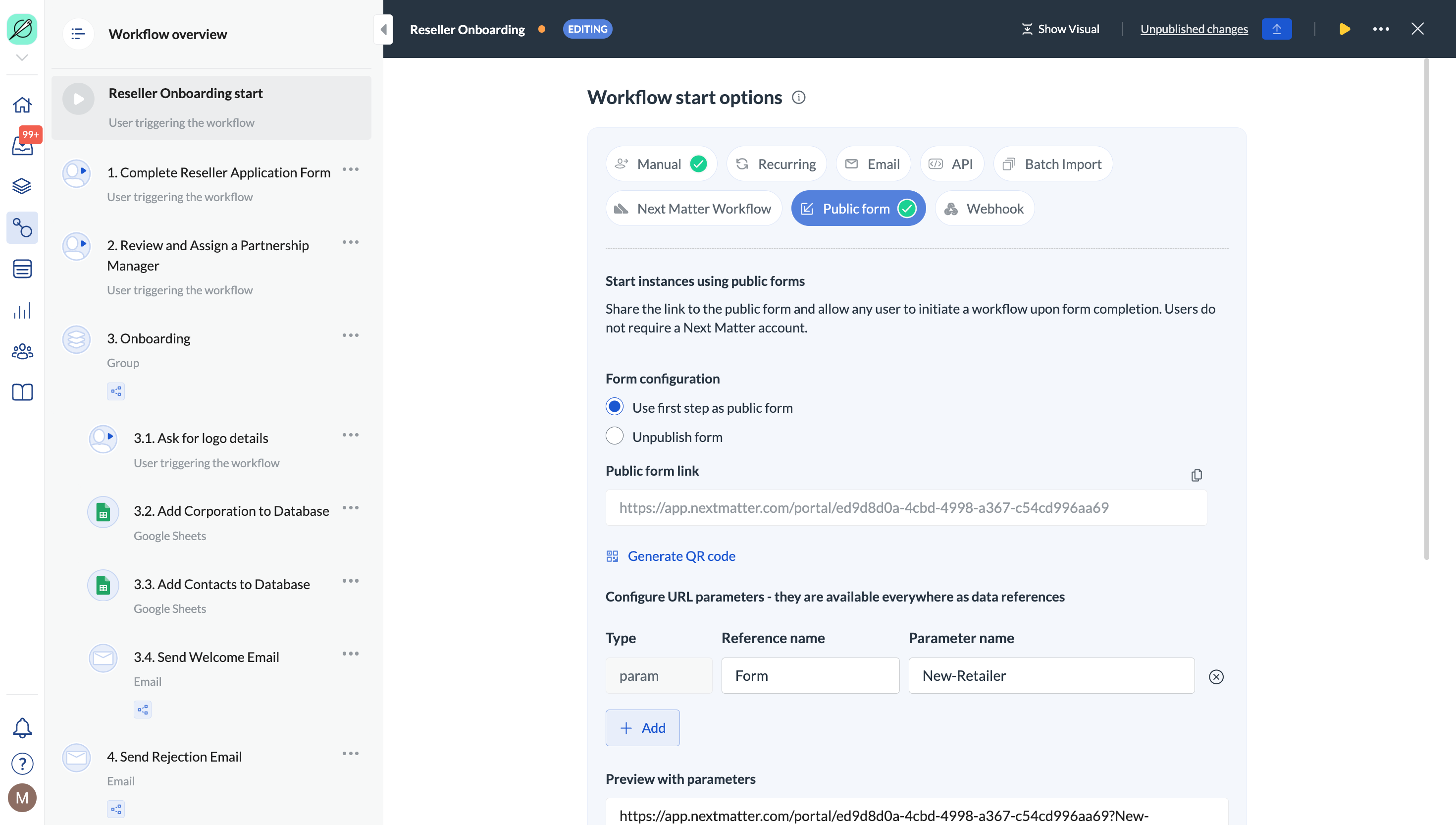
- Copy the link and send it to the person who should start the workflow. Alternatively, you can generate a QR code to share.
